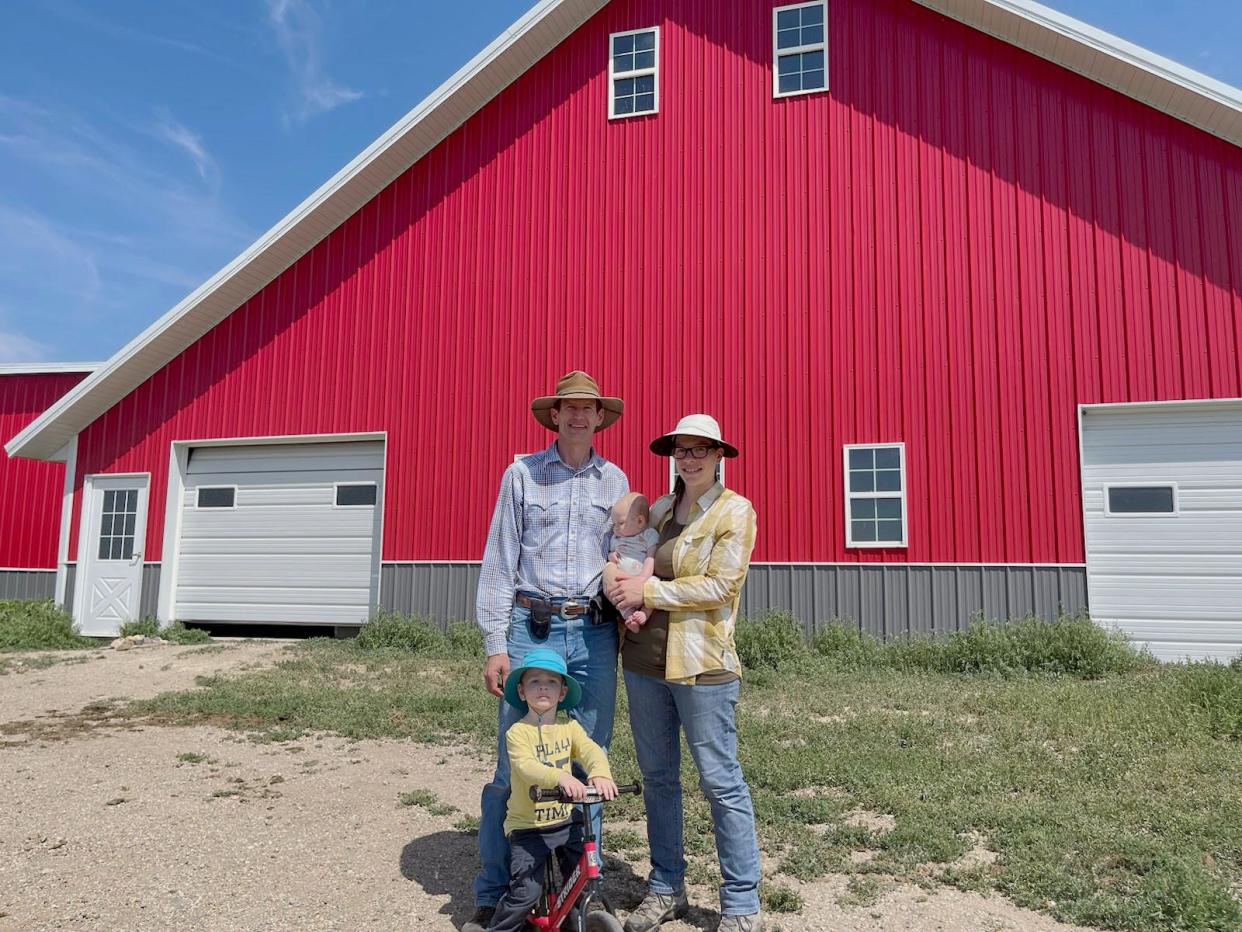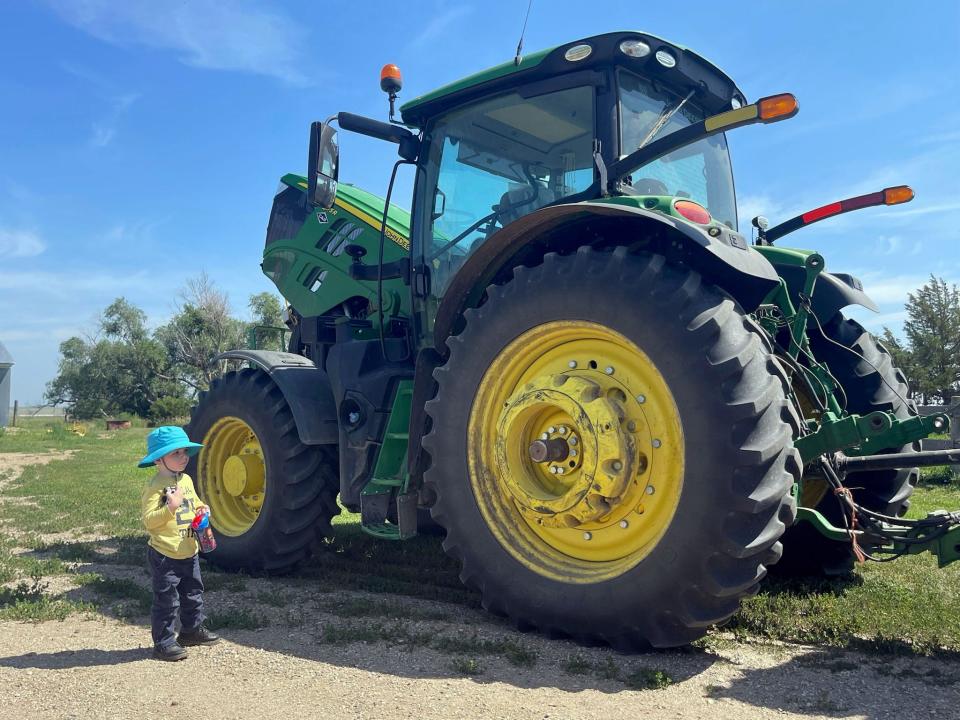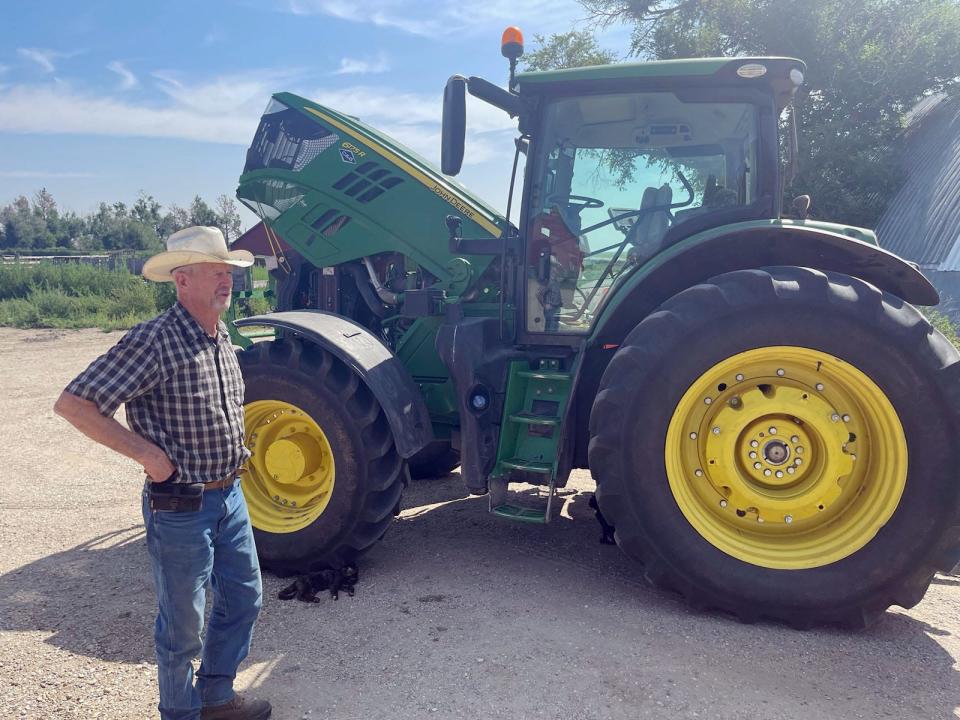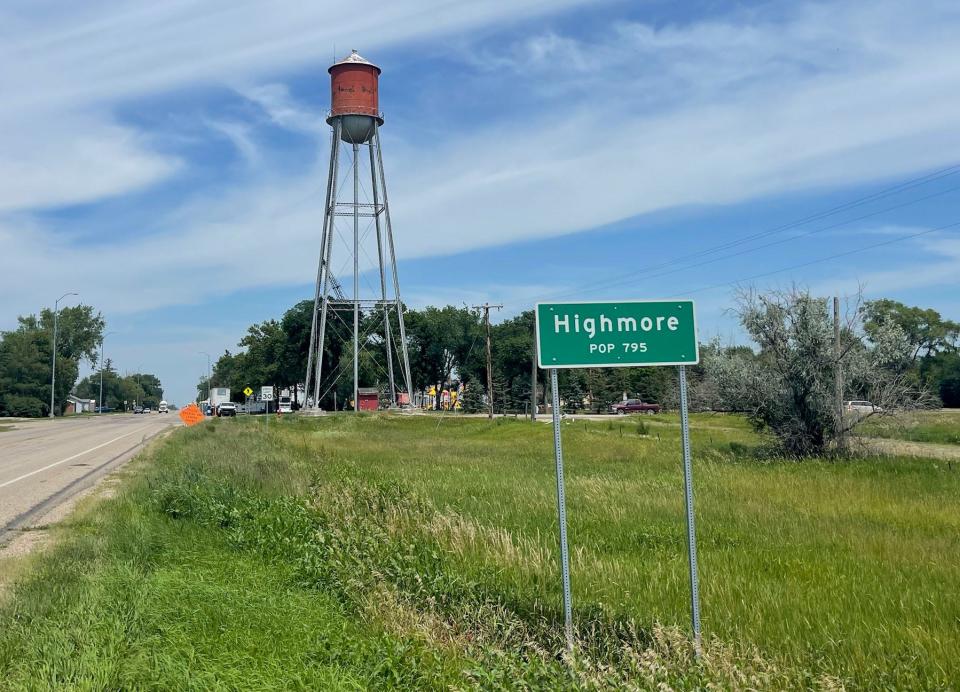South Dakota's Hyde County, with population in decline, seeks to stabilize

HOLABIRD, S.D. – The morning of July 24 arrived with endless blue skies and an equally vast Monday workload for fourth-generation Hyde County cattle rancher Seth Zilverberg.
He and his father, Don, hit the fields to bale alfalfa while the moisture content was right. Too wet and the alfalfa will rot. Too dry and the leaves break off. Then they returned to the north portion of the Bar JZ Ranch near Holabird, where 75-year-old Don resides with his wife, Peg.
Seth, 39, headed to the house to gather his 2-year-old son, Solanus, who emerged carrying a toy tractor and approached Seth’s real-life John Deere with familiarity. That could mean a fifth generation of ranching for the Zilverbergs, who have bucked the trend of dying farms and sinking populations in Hyde County, a rural expanse in central South Dakota framed by the Missouri River at its southwest edge, about 40 miles east of Pierre.

“If early indications mean anything, our son will be all in,” said Seth, a 2002 graduate of Highmore High School. He earned an animal science degree at South Dakota State and returned to raise a family and sell cattle on land purchased by his great-grandfather in 1928.
“The kid loves everything outdoors, the machinery especially.”
That generational pull has become less common in Hyde County, whose population of 1,184 ranks 65th among South Dakota’s 66 counties, with little stabilization in sight.
Hyde lost a higher percentage of population (6%) than any other South Dakota county from 2020-22, and it was one of just four counties (joined by Jerauld, Ziebach and Faulk) to see double-digit percentage declines from 2010-2020, according to the U.S. Census Bureau.
Seth Zilverberg, who uses genomically enhanced breeding to meet the demand for bulls, sees himself as fortunate to carry on a Holabird tradition started by Dutch ancestors nearly a century ago.
Driving south from Don’s property to Seth’s ranch, where a refurbished red sale barn looms, reveals family-owned operations that were able to maintain a line of succession.
“There are a few places near us that had people living or working there and are now abandoned farmsteads,” said Seth, who married his wife, Bridget, in 2019 and has a 4-month-old daughter, Avila, in addition to his son. “It takes a lot of hard work and a will and desire to keep it going.”

Problems with dwindling population not easily fixed
Reversing population trends in rural counties is a formidable task.
Hyde County has just one organized community, Highmore, a town of 653 residents and so named because it had the highest altitude (1,886 feet) among rail stops from Chicago to the Missouri River.
Highmore made headlines recently as the site where former South Dakota Attorney General Jason Ravnsborg struck and killed pedestrian Joseph Boever while driving on U.S. Highway 14, which led to Ravnsborg’s impeachment and removal from office.
The county’s population has dropped 53% since 1970, when it was 2,515. It has a median age of 46.1, compared with the state median age of 36.9. And the county’s 548 households is down from 679 in 2000, according to Census data.
SDSU professor and state demographer Weiwei Zhang said Hyde County typifies a trend of rural counties getting smaller due to natural change (more deaths than births) and negative net migration as young people look elsewhere for career opportunities.
She noted that of counties in South Dakota with fewer than 5,000 residents, 22 of 30 (73%) had population declines from 2010-20, compared to 11 of 27 (41%) for counties greater than 5,000 but less than 20,000. None of the nine South Dakota counties with populations greater than 20,000 saw population declines during that period.
“Of the people that are moving within our state or from other states, most are moving to metro or large counties,” Zhang said. “Counties that already had a small population are continuing to lose people. Many of these places are not only rural, they’re remote and isolated. The problems they face are not easily fixed.”
School district feels pinch from shrinking enrollment
Quinton Cermak, superintendent of the Highmore-Harrold School District, took a break from office duties July 24 to show a visitor the farm-framed field where he played football as a high schooler on the south edge of Highmore.
A tornado cut through town in 2016, damaging the bleachers and crows’ nest. But it wasn’t Mother Nature that left the football field dark and empty on fall Friday nights. It was a shortage of available players, which came close to ending Highmore-Harrold’s football program in August 2015.
“It was too close for comfort,” said Cermak, a 1996 Highmore High grad and former football coach who became superintendent in 2016. “We had only eight or nine kids who wanted to play football, so we had to pull some strings at the 11th hour.”
The state activities board called a special meeting and voted to allow a co-op for nine-man football with Miller, a town of 1,318 located 23 miles east of Highmore. The arrangement, still in place, calls for the combined football program to use Miller’s nickname, colors and facilities, meaning no home games for Highmore.

It’s been a tough adjustment for some residents of Highmore, which also saw its American Legion baseball program merge with Faulkton.
“I played on this field, so I agree it would be cool to have home games again,” said Cermak, scanning the silos and water tower near the complex, where goalposts and scoreboard still stand.
“But at the end of the day, the main thing is to make sure the kids who want to play football have a chance to do that.”
The football fallout points to a larger problem – dwindling enrollment at Highmore-Harrold that reduces the amount of state aid the district receives, putting staffing and activities at risk.
The school district had a K-12 enrollment of 215 in 2022-23 – down from 250 in 2016-17 – and saw its general fund balance dip to $60,000 following the 2020-21 school year, which Cermak characterized as “extraordinarily low.”

“We were looking at having to reduce offerings at the high school level while still trying to be compliant with South Dakota graduation requirements,” he said.
Property tax revenue from the Triple H Wind Project, an operating wind farm with 92 towers in rural Hyde County, helped save the day. Tax revenue is split between the school district and county, with the district receiving a check for $421,000 in 2022, boosting its general fund to more than $610,000 when combined with federal Coronavirus Aid, Relief, and Economic Security Act dollars.
This article was produced by South Dakota News Watch, a non-profit journalism organization located online at sdnewswatch.org.
This article originally appeared on Sioux Falls Argus Leader: Hyde County seeks to stabilize its population


